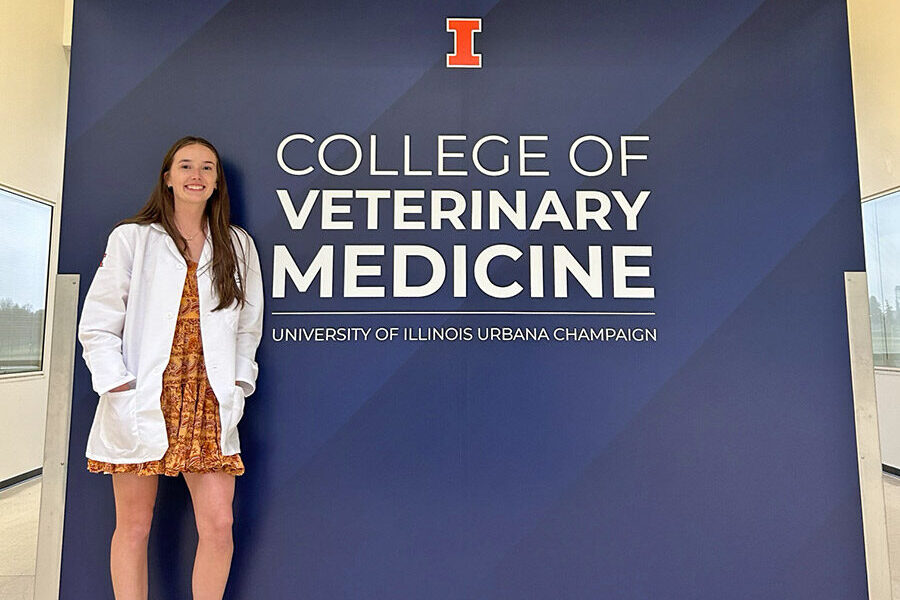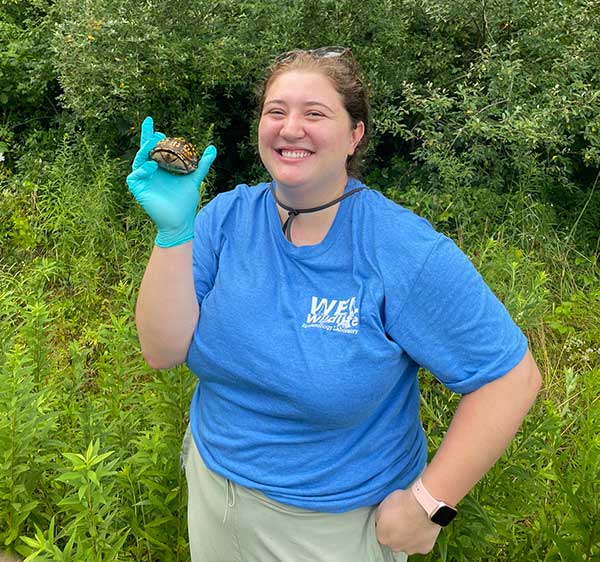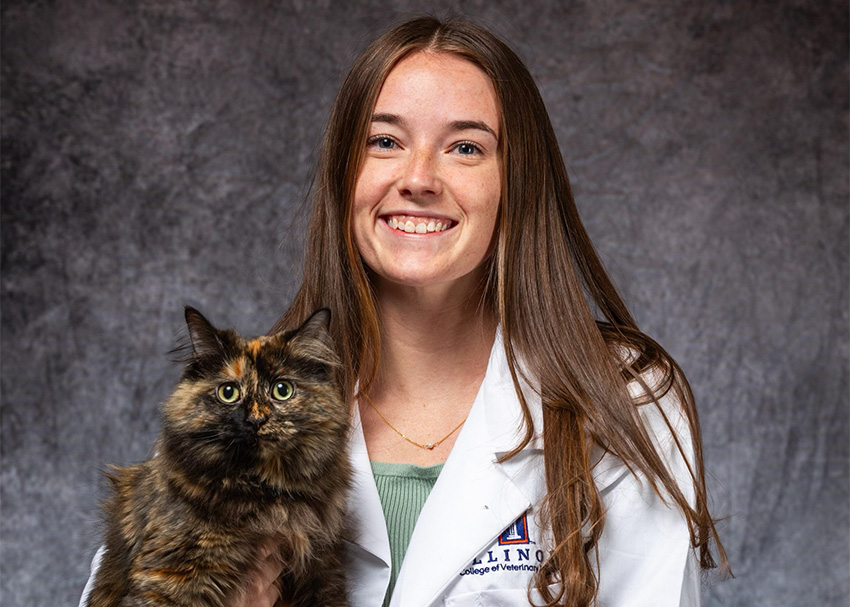Research Will Bring New Ways to Manage OA
This is the third installment in my series about equine osteoarthritis. So far I have covered the pathophysiology behind osteoarthritis (OA) as well as some treatment options available to improve the comfort and joint health of our equine athletes. While there is no cure for OA, we are lucky to have a large toolbox of options from which to develop individualized treatment plans. This blog delves into some recent developments in treatment options for OA.
Biologics: Above and Beyond
Several types of biologic products – usually produced from the horse’s own tissues by use of specialized equipment and methodology – are increasing in popularity as horse owners and veterinarians seek treatment options to improve joint health and maximize the horse’s athletic lifespan.
IRAP (Interleukin-1 Receptor Agonist Protein) is produced by incubating the horse’s blood with specialized glass beads for 24 hours to activate release of beneficial inhibitory cytokines. These cytokines are cell-signaling molecules that exert anti-inflammatory effects by targeting interleukin-1, an important initiator of the inflammatory cascade. Intra-articular administration has been shown to have both disease- and symptom-modifying effects. In a double-blind placebo-controlled study, treated horses showed significant improvement in lameness scores and less pathologic changes of synovium and articular cartilage.
PRP (Platelet Rich Plasma) is produced by centrifugation of the horse’s own blood to separate the platelet-rich portion from the remainder of plasma and red blood cells. Platelets contain growth factors that are important for soft tissue healing and provide additional benefit to joint and cartilage health. Multiple commercial processing systems are available, with each producing different concentrations of platelets and white blood cells.
The contribution of white blood cells to the healing process is not clear – suggested benefits include anti-infectious action and growth factor content, but these cells also release cytokines that can incite or intensify inflammatory reactions. In addition to intra-articular use, PRP can also be injected directly into tendons or ligaments at the site of injury. Experimental injection into joints for treatment of OA showed statistically significant improvement in the degree of lameness and degrees of joint effusion.
Prostride is a third type of autologous protein solution generated from the patient’s blood in a two-step processing system that first concentrates platelets similar to PRP, and then uses specialized polyacrylamide beads to increase the anti-inflammatory cytokines and growth factors. The second step creates a product that shares properties with PRP and IRAP but requires only a 20 minutes of processing time. Prostride is thought to block the inflammatory cascade, which may decrease cartilage destruction and potentially stimulate cartilage repair. With treated horses showing improvement in lameness score, Prostride is worth consideration as a treatment option for OA.
Stem cells are naturally occurring cells within the horse’s tissue that retain some ability to differentiate into different tissues. Stem cells (technically termed mesenchymal stem cells) can be collected from muscle, fat, or bone marrow of the patient. The tissue is processed to isolate the stem cells, which are then grown or “expanded” in culture to create a large population of stem cells. These stem cells can then be injected into a joint or directly into a tendon or ligament tear to aid in healing.
Pulpcyte is one of the newest innovations designed to aid in healing of musculoskeletal injuries of horses. Technically defined as a biologic tissue particulate, Pulpcyte is a commercially produced mixture of stem cells and extracellular matrix (including growth factors and other proteins). The cells are obtained from the immature dental tissues of neonatal foals that passed away naturally during the birthing process, and do not appear to cause rejection when grafted to the adult patient. Because the cells are maintained in a tissue bank, the injection can be ordered for the veterinarian, eliminating the time required for processing and expansion of stem cells harvested from the patient. Early studies have shown no adverse reactions, and positive results when used to treat OA, as well as tendon, ligament, and other soft tissue injuries.
Complementary Modalities
Extracorporeal Shockwave Therapy (ESWT) applies a focused, high-intensity acoustic pressure wave to the treatment area. The mechanisms through which ESWT causes beneficial effects are poorly understood. Studies have shown increased vascularization and up-regulation of cytokines, which may be responsible for increased bone formation and improved healing of soft tissue injuries. ESWT has been applied to treat a multitude of musculoskeletal injuries in horses, including suspensory desmitis, kissing spines, and osteoarthritis. There is an additional analgesic effect, which lasts up to 48 hours in horses following ESWT. For this reason, racing and competition governing bodies set restrictions on use of ESWT during or immediately before competition.
Acupuncture involves the stimulation of predetermined acupuncture points by insertion of small needles. Although rooted in traditional Chinese medicine, many of the classical acupuncture points are now known to be associated with significant structures of the nervous system. Stimulation in these areas incites a local inflammatory effect, which results in improved blood flow, local tissue immune response, and relaxation of muscle and tissues. In a horse with OA, acupuncture therapy may be beneficial to control pain and address additional problem areas to improve the success of treatment.
Chiropractic focuses on the health, alignment, and mobility of the spinal column, pelvis, and limbs. The basic principle of chiropractic is that abnormalities at a joint affect the associated muscles, ligaments, nerves, and blood vessels. Chiropractic adjustment consists of controlled bursts of force applied to specific joints to restore normal motion. Chronic lameness or OA affects the horse’s way of carrying itself, potentially resulting in restrictions or abnormalities in other regions. Chiropractic adjustment can relieve these secondary areas of discomfort, allowing for improved response to treatment of the primary disease.
Take-Home Message
Osteoarthritis is an incurable, but manageable, disease that affects horses of all ages, breeds, and disciplines. With a vast array of treatment options available today, there is no need to despair over a diagnosis of osteoarthritis in your equine athlete or companion. Management strategies aim to decrease inflammation, alleviate discomfort, and mitigate disease progression.
Research is ongoing to develop new and better ways to slow, stop, or even someday reverse disease progression in horses with OA. Given the many currently available treatment modalities, the horse owner and veterinarian should work together to develop a treatment plan best suited to the horse’s conditions and goals for future athletic use.

![[new treatments for osteoarthritis]](https://vetmed.illinois.edu/wp-content/uploads/2021/04/sb-bishop-osteo2.jpg)


